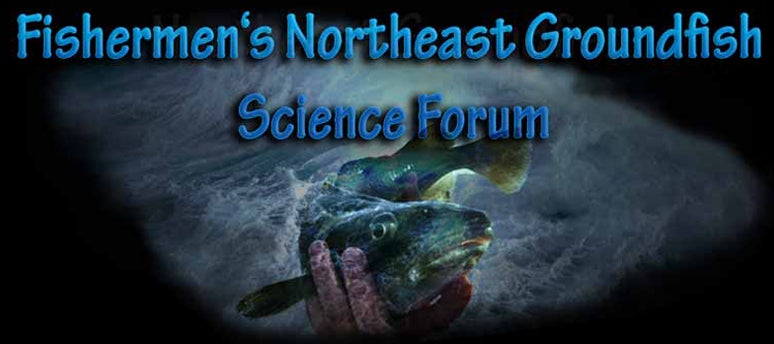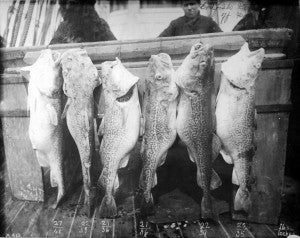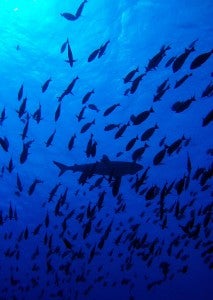EDF’s Oceans program team is comprised of knowledgeable people with a wide range of experience in fisheries, marine sciences and oceans policy. In continuing with our spotlight on EDF’s passionate and talented Oceans staff, we invite you to learn a little more about our Chief Oceans Scientist, Dr. Doug Rader.

EDF Chief Oceans Scientist, Dr. Doug Rader
Where is your family from?
My father’s and mother’s families have lived in North Carolina as long as anyone can remember. I grew up in Charlotte as a middle child between two brothers.
What made you so interested in the oceans?
I’ve always been fascinated by nature. When I was a kid, my family went tent camping for weeks every summer on what was then a really isolated part of North Myrtle Beach. My mom would wake us up long before sunrise to be the first to discover what the sea had brought in: starfish, sea urchins and seaweed. Back at home, I spent my free time wading creeks, searching for snakes, crawfish and turtles. As cliché as it sounds, watching “Sea Hunt,” and “Flipper” propelled a life-long interest in underwater exploration. Recently my wife and I spent 30 minutes “up close and personal” with a whale while scuba diving.
What did you study in college?
I got my Bachelor’s Degree in 1977 from UNC Chapel Hill. I followed with a Masters focusing on Marine Biology from the University of Washington. Then, I got my Ph.D. from the University of North Carolina in Biology, focusing on the ecology of salt marshes. I was studying worms of various types that were so small you had to dye them red to see them under the microscope!
Weren’t you a teacher at one point?
I was hired the day before school started in fall 1984, to be a science and math teacher at the high school in Siler City, North Carolina. I loved it. I also taught Sunday school back when my kids were young.
Where did you work after you left teaching?
After finishing school, I realized I knew a lot about animals and plants, but not much about how ecosystems are managed. To fill that gap, I worked for North Carolina’s Division of Coastal Management, and then the Division of Environmental Management, focusing on water quality and other coastal resource issues. I was later the first director of the program to save the Albemarle-Pamlico Estuary, one of the largest in the U.S. Much of my time there was spent coming to understand fisheries and fishermen.
What have you done at EDF that you are really proud of?
I led a team that analyzed every square mile of US oceans to come up with recommendations for sites that were designated by George W. Bush as marine national monuments. It was a great honor to help preserve some of the most precious areas of the ocean.
Also, for the past ten years, I have chaired the South Atlantic Fishery Management Council’s panel that’s developing a comprehensive plan for the ocean ecosystem in the region. As part of the plan, we recently announced that more than 23,000 square miles of unmatched deep-sea corals will be preserved. We made sure the corals were protected, but also are allowing fishermen access to certain fishing areas as long as they use gear that won’t damage the coral habitat.
I spent many years helping protect Southeast wetlands and estuaries, which are so important as habitat for fish, birds and many other animals. Our team used a successful lawsuit and a public-private partnership with Weyerhaeuser to plug a major loophole that allowed wetlands to be destroyed while installing pine tree farms, the biggest threat in the region. A similar partnership with Texas-Gulf Inc. cut pollution into the major fish nurseries of the Pamlico River from one of the largest fertilizer complexes in the world by more than 85%.
We also stopped then-Vice President Dan Quayle from drastically changing the definition of wetlands, which would have meant that many of the nation’s most important wetlands would lose their protection.
What’s something many people don’t know about you?
My main hobby is historical archeology, blending work in musty archives with time in the field to find colonial and Native American sites. I got started when I spotted a bunch of American Indian spear points and wondered why they were there. I’ve now found and registered hundreds of Native American archeological sites in North Carolina. I’ve also now discovered the site of a long-lost Quaker Church, called Contentnea Meeting, active when Lord Cornwallis British Army marched right by on the way to Yorktown in 1781.
Never miss a post! Subscribe to EDFish via a email or a feed reader.













 At a recent meeting in Destin, FL, where members of our Gulf and South Atlantic teams met to discuss collaborative projects, I had the opportunity to see a commercial boat offloading its catch after a three day fishing trip. What an experience!
At a recent meeting in Destin, FL, where members of our Gulf and South Atlantic teams met to discuss collaborative projects, I had the opportunity to see a commercial boat offloading its catch after a three day fishing trip. What an experience!